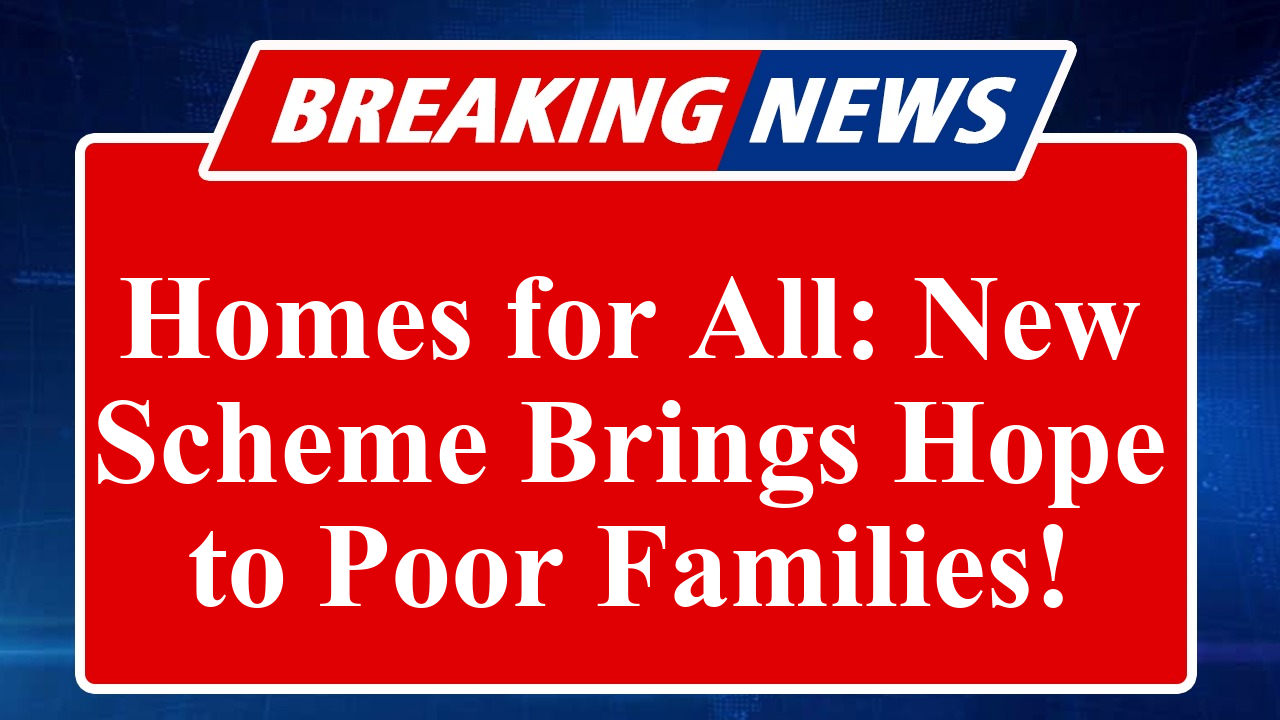“The Indian government has rolled out a new housing scheme aimed at providing affordable homes to low-income families. Targeting urban and rural poor, the initiative offers financial aid, interest subsidies, and streamlined loan processes. With a focus on transparency and inclusivity, the scheme aims to address housing shortages and improve living conditions for millions.”
Government Unveils Housing Initiative for Economically Weaker Sections
The Indian government has launched an ambitious housing scheme to provide relief to poor families across urban and rural areas, addressing the persistent challenge of housing shortages. Announced recently, the initiative aims to deliver affordable homes to economically weaker sections (EWS), low-income groups (LIG), and middle-income groups (MIG), with a focus on transparency and accessibility.
Under the scheme, eligible families will receive financial assistance of up to ₹2.5 lakh for constructing pucca houses, along with provisions for basic amenities like toilets and LPG connections. The program builds on the success of the Pradhan Mantri Awas Yojana (PMAY), which has already delivered over 4 crore homes since 2014, according to posts on X. The new scheme expands coverage to include all statutory towns as per the 2011 Census and newly notified urban areas, ensuring broader reach.
In urban centers, the scheme targets families living in rented accommodations, slums, chawls, and unauthorized colonies. Prime Minister Narendra Modi, in a recent address, emphasized the government’s commitment to easing financial burdens through interest rate subsidies and bank loans, potentially saving beneficiaries lakhs of rupees. The Credit Linked Subsidy Scheme (CLSS), reintroduced with a ₹4,000 crore allocation, will provide interest subsidies to make home loans more affordable for EWS, LIG, and MIG households.
Rural families are also a key focus, with the scheme offering financial support for constructing homes with eco-friendly materials. The initiative integrates with other government programs to provide holistic support, such as sanitation and energy access. States like Chhattisgarh and Telangana have already begun implementing similar schemes, with Chhattisgarh’s Mukhyamantri Gramin Awas Nyay Yojna distributing ₹25,000 as the first installment to 1,30,000 beneficiaries for house construction, as reported by the Times of India.
To ensure transparency, municipal authorities will conduct surveys to identify eligible families, and applications can be submitted online via official portals. Beneficiaries must meet income criteria—up to ₹3 lakh for EWS, ₹3-6 lakh for LIG, and ₹6-18 lakh for MIG—along with residency and housing need requirements. The scheme also prioritizes women and senior citizens, offering ground-floor accommodations for the latter to enhance accessibility.
Despite its promise, challenges remain. Previous housing schemes, like PMAY-Urban, have faced hurdles, with only 67.45% of the targeted 1.18 crore homes completed by 2024, according to Newslaundry. Structural issues in projects, such as those in Gujarat’s Vadodara and Surat, highlight the need for better oversight and quality control. The government has responded by emphasizing new construction technologies to ensure faster, high-quality builds.
The scheme has allocated ₹2.30 lakh crore for PMAY Urban 2.0, aiming to construct 1 crore houses for urban poor and middle-class families. A Credit Risk Guarantee Fund Trust, with an increased corpus of ₹3,000 crore, will provide guarantees on affordable housing loans, reducing financial risks for lenders and encouraging participation.
States are also stepping up. Telangana’s Indiramma Housing Scheme, with ₹22,500 crore allocated for its first phase, aims to provide homes transparently to eligible poor families, as reported by The Hindu. Similarly, Maharashtra’s new housing policy targets 35 lakh homes for EWS and LIG by 2030, aligning with the national vision of “Housing for All,” according to posts on X.
The scheme’s success will depend on effective implementation, addressing past shortcomings, and ensuring that benefits reach the most marginalized. With millions still living in inadequate housing, this initiative could transform lives by providing not just shelter but also dignity and economic stability.
Disclaimer: This article is based on recent news reports, government announcements, and posts on X. Information is sourced from reputable outlets like Times of India, The Hindu, Hindustan Times, and Newslaundry. Readers are advised to verify eligibility and application details through official government portals.

